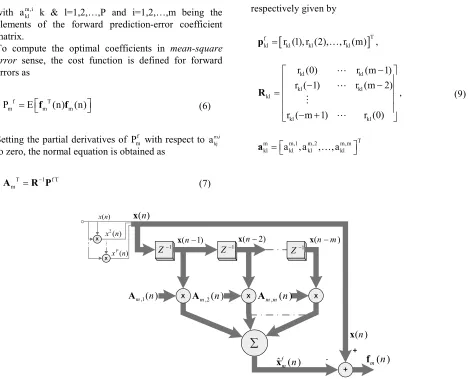Development of Nonlinear Lattice-Hammerstein Filters for Gaussian Signals
Full text
Figure




Related documents
a) Extract, transform, and load transaction data onto the data warehouse system. b) Store and manage the data in a mult idimensional database system. c) Provide data access
This guide includes a planning checklist, an appendix of resources listing organizations that can provide speakers and/or exhibitors, a list of potential workshop topics, suggested
es l¨ aßt sich mit Hilfe des Pauli-Prinzips interpretieren: Wenn die beiden Elektronen den gleichen Spin haben, so k¨ onnen sie sich nicht im gleichen Orbital befinden und
A larger, controlled clinical trial is warranted testing cognitive and somatic function in MPSI with up to 2 years of treatment with valanafusp alpha at the dose of 3
Although a few studies have identified genes or pro- teins expressed in primary tumors that differ in expres- sion levels based on lymph node status [9-14], other studies failed
Given that the surface texture, surface absorption capacity, fabric composition together with volume of blood, fall height, velocity at which the droplet hits the surface affect
Our experience shows that this ability of SpecTM can result in much simpler algorithms, and our results sug- gest that the most specialized version of SpecTM ( val-short ) lets us
For whatever reason, consumers found the oil shocks of earlier decades to be very troubling events, with a 20 percent increase in relative energy prices (assuming again a base

